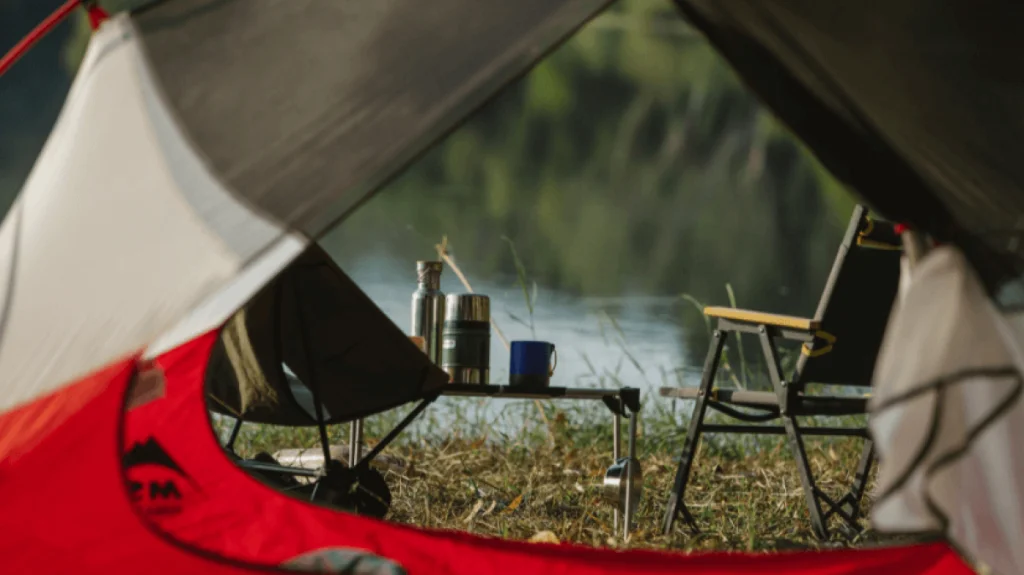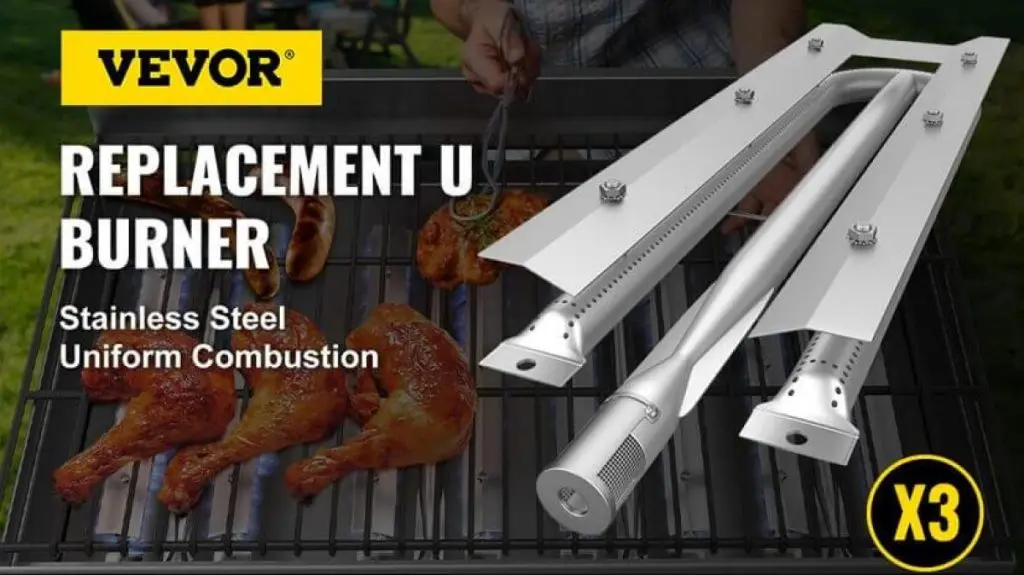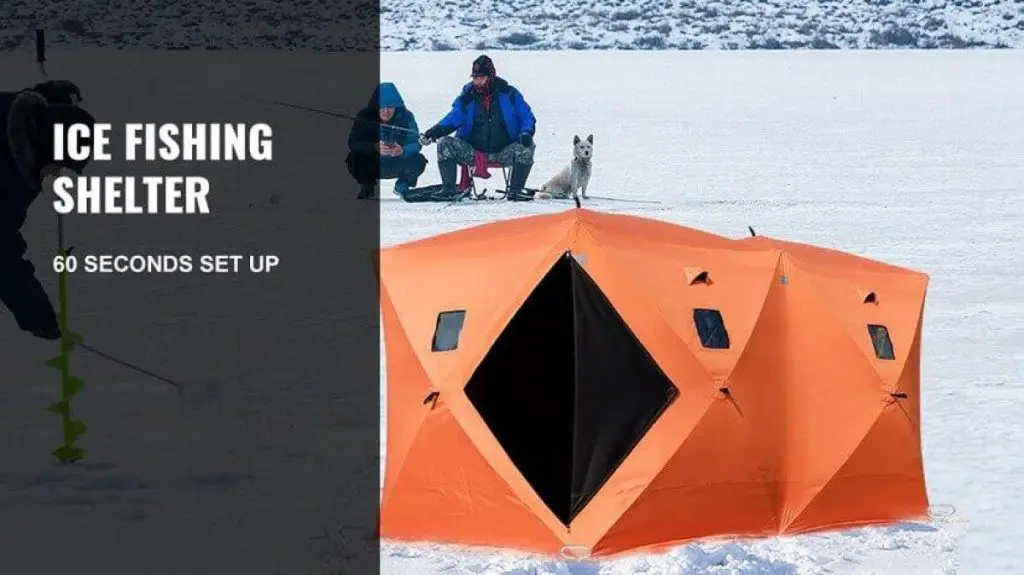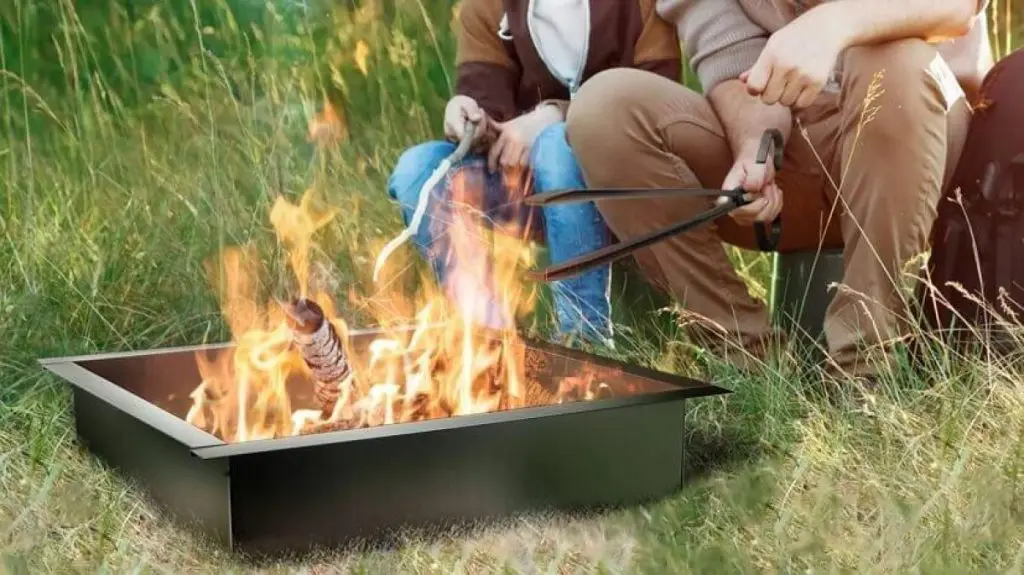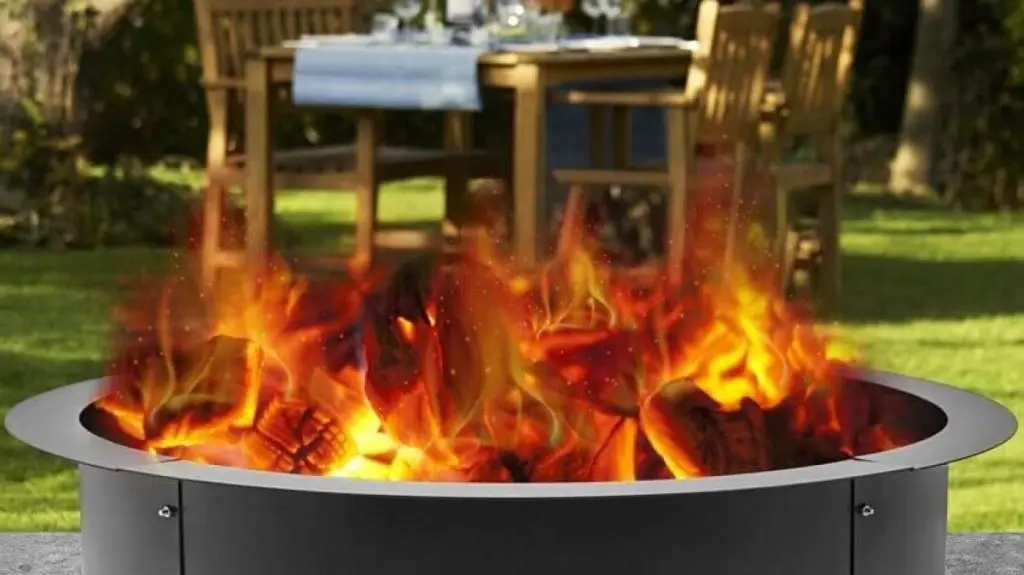This time of the year calls you to gather your stuff and head out into the wild with a tent. But remember that a campsite setup is more than just pitching the tent and calling it a night. No comfy hammock or delicious food will help if your camping setup is not up to the mark. So, take your time to pack rather than tossing everything in at the last moment.
Now, there is no ultimate rulebook to setting up a camp; you will have to find out what works best for the spot you chose for your adventure. Do not worry if you are hanging out there for the first time because our camping setup ideas will help. Besides, your experiences from the past will also guide you through and through.
Essential Gear to Bring for Tent Campsite Setup
1. Choosing the Right Tent for Your Needs
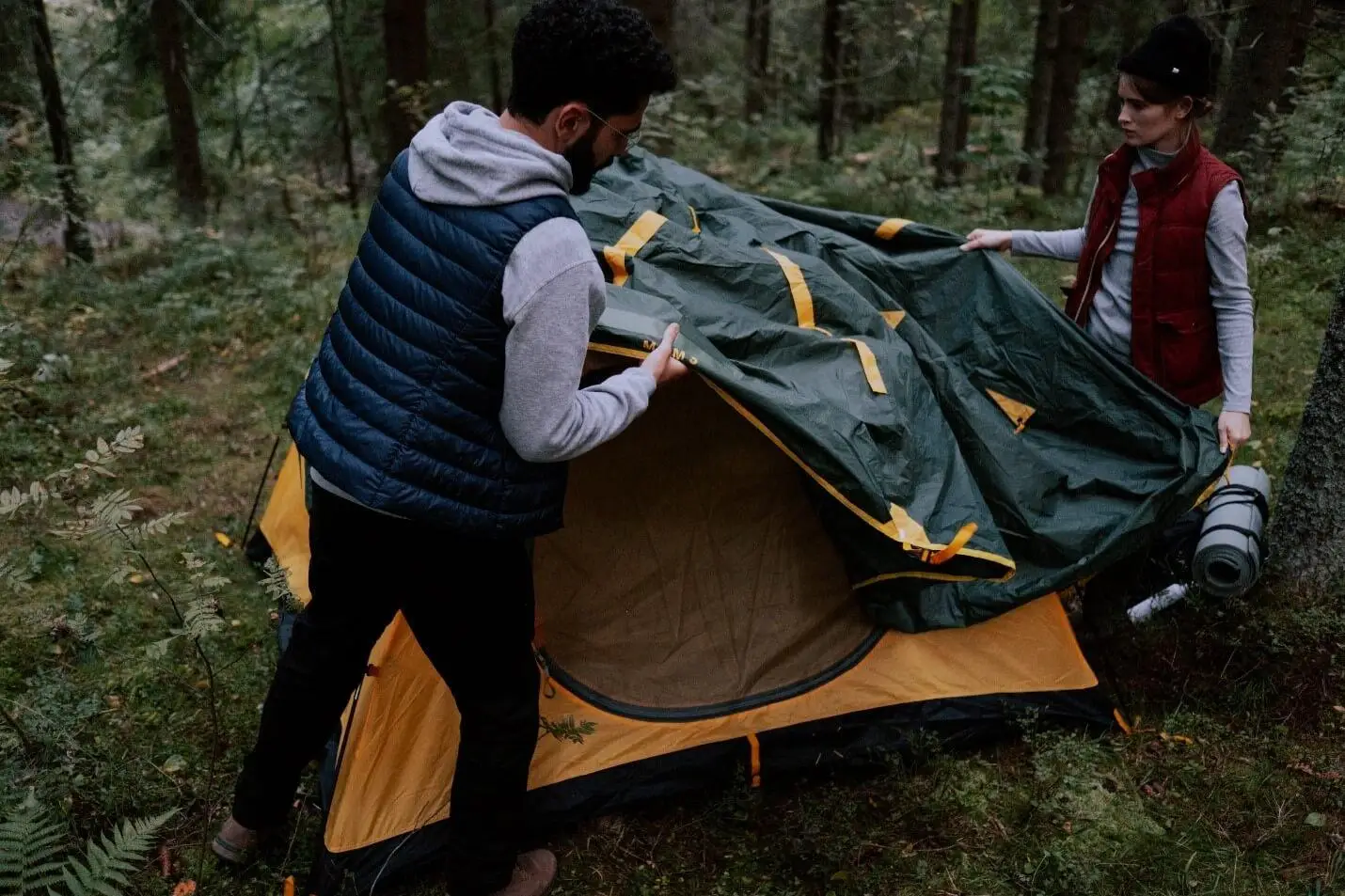
A camping setup has to be just right for your needs. So, the first step is to find a camping tent based on the number of people in your group, pets, and the amount of gear you plan to take along. Unfortunately, no standard units provide you with a per-person measurement; you will make a rough estimate. Count heads and everything else in, and then leave a margin for some more space, just in case.
In addition, seasonality will determine the material of the tent you choose. Polyester and nylon make viable options for chilly days but not warm days. Canvas, cotton, or poly-cotton make cool camping setups for hot weather.
2. Comfortable Sleeping Bags or Sleeping Pads
A comfortable sleeping bag in your campsite setup feels like heaven after a tedious day. Like tents, there are plenty of options in sleeping bags to suit your preferences.
Rectangular bags or sleeping pads are roomy and cool, so they are a perfect choice for summer car camping. Mummy-style zip bags are more comfy and snuggly, making an excellent slumber option during cold weather. A double sleeping bag will work fine for couples on a romantic getaway.

3. Portable Camping Chairs and Seating Solutions
Whether you want to relax after a long day of outdoor activities or sip margaritas with your friends, you will need some seating math to do. A sturdy camping table and some portable chairs set to face the scenery will do the deed.
You cannot crash in your bed or a hammock every time, so a lounging arrangement in your campsite setup is a must.
4. Campsite Lighting
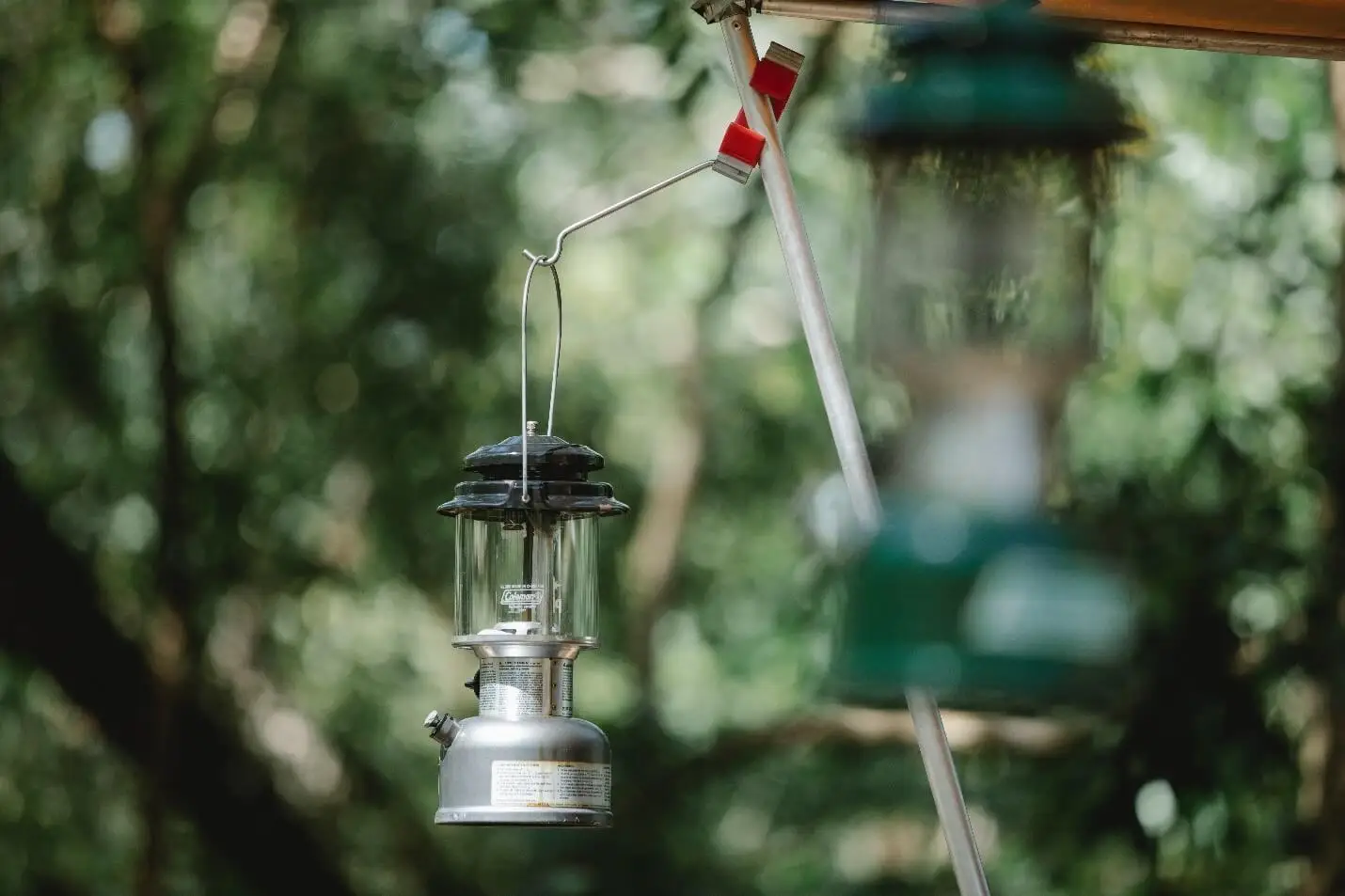
Another secret to erecting the best camping setup is by making sure it is well-lit. It is supposed to get really dark out there when the sun goes down, so do not forget high-quality lights. Illuminate your space with some LED lights and headlamps. You can even add a string of lanterns or fairy lights for an aesthetic campsite experience.
5. Multi-Tool Kits and Camping Utensils
Nothing is worse than rummaging through your bag and realizing that you did not pack enough gear to survive in the wild. Sometimes, camping throws the most unpredictable tasks at you. In such situations, one needs a creative mind to figure out a DIY solution and a multi-tool kit to execute that idea.
Moreover, it will not always be the tents, chairs, or tarps that have you rummaging through your bag. If you do not pack enough utensils, you will find yourself frantically looking for a spoon or cup every time before you eat.
Campsite Location and Setup Ideas
1. Pick the Perfect Campsite
First, you need to pick the right location for your camping activity. No matter how well you set things up, you will never be able to enjoy a low-quality campsite. Consider the following things while narrowing down a spot for camping:
• Seasonality is a substantial factor that impacts your decision to pick a campsite. The locations that feel perfect in winter can feel like a death pocket in summer.
• Next, you must evaluate the shading options at the potential campsites you narrowed down, especially if you are going in the summer.
• If you are going there for the first time, see what other people have to say about your campsite and how they experienced it.
2. Pitching Your Tent
Once you reach your destination, it is time to pitch in your setup. Here are some camping tent setup ideas:
• Avoid valley floors, no matter what season it is, because they are coldest in winter and most humid in summer.
• Pick a leveled spot with water and firewood in close vicinity. But ensure it is off-trail because that way you might disturb other backpackers.
• Clear the ground of any twigs, stones, or harsh objects, and lay a ground sheet for extra safety.
• Avoid danger zones, like insect breeding grounds, animal habitats, water-logged meadows, etc.
• The tent has to be pitched weighted down, with the peg at 45 degrees facing away from the tent. Check the weather predictions and use more than one peg to get a more secure hold.
• Try keeping the doors and windows closed after pegging the tent to ensure stability and strength.
3. Creating a Cozy Campfire Area
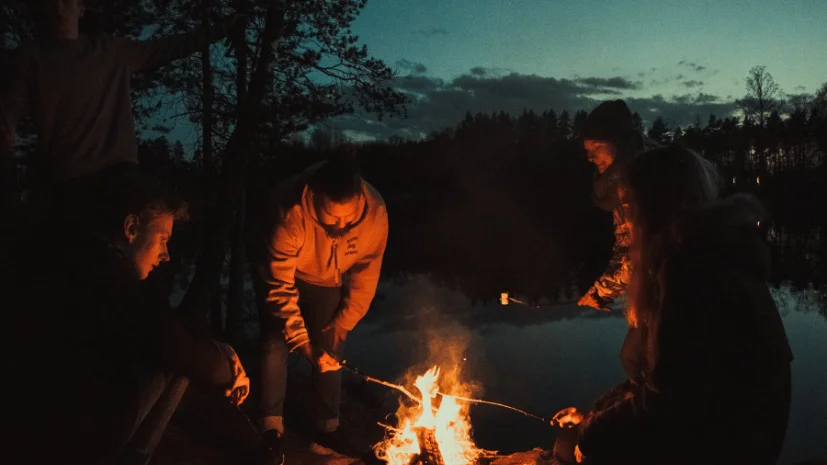
Unarguably, campfires are the most rewarding aspect of camping, but you must do them safely.
Firstly, make sure your bonfire is at least 15 to 20 feet away from bushes and your camping setup. Lay a bundle of timber and use small pieces of kindling to form a tepee. Set the fire and keep adding more pieces to the kindling in order to sustain the fire.
4. Organizing Campsite Zones: Cooking, Sleeping, Relaxing
Setting up a camp can be a challenging task for someone who is not used to outdoor activities. Designating the spots for cooking, sleeping, washing, or relaxing is nothing but a matter of personal choice.
It does not matter if your kitchen is behind the camping setup or in front of it, facing the scenery. All you have to do is organize your space in a way that does not have you running around for stuff; everything should be easily accessible.
Camping Kitchen Setup Ideas
1. Choosing the Right Cookware
Disposable cutlery might fulfill your dining needs, but it cannot become cookware for you. Like it or not, you will have to carry some outdoor cookware for your campsite setup. Aluminum or stainless steel pots and pans make durable outdoor cookware options.
Remember, the key is to stay organized here as well; a camping kitchen table is an excellent way to do that. You might not want to miss all the beautiful moments and fun when you were too busy rummaging around to find things.
2. Portable Camping Stove
Although cooking on natural fire might seem like an enticing idea, it is not always practical. The winds can be too strong for the fire to keep burning, or you might not find enough timber. Having a portable cooking stove will save you the hassle of sustaining the fire and also reduce your cooking time.
3. Food Packing and Storing
Whether you want to cook by your campsite setup or take frozen food packs with you, there are some food storage essentials you will need.
• Insulated food carriers prevent food from losing or retaining more moisture than necessary
• A car refrigerator to make sure your beverages and frozen food stay cool
• Ice packs and a portable cooler to prevent meat or dairy products from spoiling
Above all, avoid storing scented items inside the tent or leaving them unattended because that will attract insects and animals.
Camp Entertainment Ideas
1. Creating a Relaxation Zone: Campsite Seating and Hammocks
At first, you must create a little zone for lounging, chilling, gossiping, or enjoying the sunsets with your loved ones. Sitting around a campfire while everyone shares a laugh is a good way to unwind in the evenings. During the day, you can take your seats near a lake and chill under the bright daylight.
However, hanging out in a hammock sounds like an intimate idea if you and your partner are on a romantic getaway.
2. Portable Camp Shower
Showers after a long day of outdoor activities can feel refreshing to your brain and body. We do not see a reason why a cool camping setup won’t include a convenient shower tent. In summer, a bath before going to bed starts the body’s natural cooling process, turning it into a self-contained cooling system. In winter, water can help you cozy up and sleep better.
3. Outdoor Games and Activities
On the days when you are tired of hanging inside your camping setup, step out in the wild. Go on a hike or take a romantic walk with your partner. You can also consider a bike ride, fishing, or bathing in the lake.
However, if you have gone camping with friends or family, you can play ball games, board games, Frisbee, or flashlight tag.
Camp Safety and Preparedness
1. Camp First Aid Kit Essentials
Along with all the other camping gear, you must not forget to put a first aid kit in your campsite setup checklist. There are bugs out there in the wild and thousands of germs, so it only makes sense to be prepared for it. Besides, one is always at risk of injury when out in the wild.
Your first-aid kit must include insect repellent, painkillers, band-aids, scissors, tweezers, burn gel, washcloth, etc.
2. Weather Preparedness: Staying Dry and Safe in Changing Conditions
Packing appropriate clothes is not the only weather preparedness you can ensure before stepping out in the wild. It is good to check weather predictions before leaving your house but keep them in check while you are away.
Sometimes, camping trips can throw unexpected weather challenges at you. So, weatherproof your campsite setup and take necessary personal protection gear, like raincoats and umbrellas.
3. Get Vaccinated
One thing many people forget before going out camping is vaccination. You never know what is lurking out there in the wild. It only makes sense to get necessary vaccinations, including tetanus shots, before going camping.
4 Ultimate Tent Camping Setup Tips
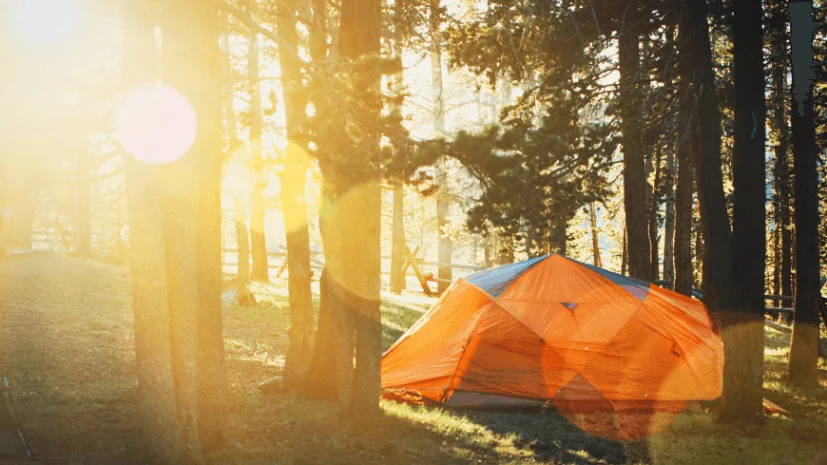
1. Test Your Gear Before Going Tent Camping
Preplanning requires you to pretest your equipment and save yourself the frustration later. There is nothing more frustrating than realizing your gear is not working once you are out in the wild. So, practice setting up a camp near your house before leaving for the trip.
2. Keep Your Gear Organized and Clean
You have arranged every camping essential and pretested it, but what is the point if you cannot find the right thing at the right time? To avoid such frustrations while setting up your campsite, make sure your gear is properly placed and organized.
3. Properly Disposing of Trash and Waste
At the end of the trip, you are going to have a heap of trash with you. You might want to dispose of it properly instead of dumping it anywhere and causing biohazard. Digging a cathole, where people might not usually camp, is the most common way to dump the garbage.
4. Using Reusable Items
Before discarding everything, rummage through the used stuff once again and pick out the usable things. Even when you are on the campsite, make sure not to waste any resources and recycle as much as possible.
Summing Up
Whether you are an amateur or a seasoned camping enthusiast, a handful of outdoor camper ideas are always great for some inspiration.
The ultimate secret to a purely peaceful camping getaway lies in the core of planning and preparedness. Be it your gear or general emergency preparedness, never leave anything unchecked before heading out for an adventure. The more ready you are to face the wild, the more exciting the trip will be.
VEVOR has made it easier for camping enthusiasts to plan their outdoor setups with the finest quality gear at amazing prices. Finding almost every range of camping gear in one place is no less than a gift.

